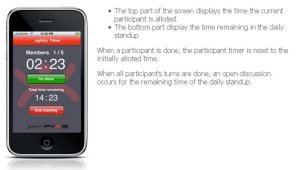In my quest to better define what Agile Leadership is and in an attempt to help managers, leaders, and stakeholders understand which behavior to modify in order to achieve a successful Agile transition within their organization, I broke down the key dimensions associated with an Agile Project team - an upcoming post will present the Agile Leadership dimensions. Based on experience and relying on numerous books and blogs published on the topic, I have extracted seven key dimensions in an attempt to generalize the concept.
My goal is to help teams and organizations going through an Agile transition understand which dimensions to modify to change the status quo. I will define at length and provide reference material in an upcoming post.
Agile Leadership – The Project Team
The Project Team
A project team is a team whose members usually belong to different groups, functions and are assigned to activities for the same project. A team can be divided into sub-teams according to need. Usually project teams are only used for a defined period of time. They are disbanded after the project is deemed complete. Due to the nature of the specific formation and disbandment, project teams are usually in organisations. A team is defined as “an interdependent collection of individuals who work together towards a common goal and who share responsibility for specific outcomes of their organisations”. An additional requirement to the original definition is that “the team is identified as such by those within and outside of the team” – wikipedia
Out of the roles defined in Scrum, the project team is a key area impacted by an Agile transition. Many changes are required in order to take full advantage of the transition – from a motivational and a performance perspective. In this context, the project team encompasses the members of the core project team that are working toward the same end goal, which is to deliver results.
The 7 Dimensions of an Agile Project Team
There are tens of variables that have been identified as key success factors for a successful agile transition. My objective is to group them under 7 dimensions. This does not mean that other dimensions aren’t important or that I offer an exhaustive list. My goal is simply to summarize the success factors under a handful of dimensions.
Autonomy
Autonomy refers to the capacity of a rational individual to make an informed, un-coerced decision – wikipedia
The concept of self-organised team is one of the pillars of Scrum. In his recent book Drive: The Surprising Truth About What Motivates Us, Dan Pink presents the differences between empowerment and autonomy (more on his book in an upcoming post) with such compelling arguments that I felt “autonomy” is a much better description of what we aim to achieve with the implementation of Scrum. As such, the team needs to have the ability to determine the sequence of the tasks to be executed, the assignment of each task, the method used to complete their work and other rules required to allow the team to achieve performance while enjoying their work.
A few questions to assess the Autonomy dimension of the project team:
- Are people on the team able to make decisions themselves and accordingly adapt to changing situations?
- Does the team determine “how” to solve their issues?
- Can the teams select the standards and practices that better allow them to produce the right solution?
- Can the team divide the work as it chooses?
- Do training, holiday, and vacation time get cancelled when the project falls behind schedule?
- Can the team members determine who is on or off the team?
- Does the team maintain a high rate of productivity without being overworked?
Competences
Competence is a standardized requirement for an individual to properly perform a specific job. It encompasses a combination of knowledge, skills and behavior utilized to improve performance. More generally, competence is the state or quality of being adequately or well qualified, having the ability to perform a specific role – wikipedia
As with other expertise, project team members must possess and/or develop certain competences in order to take advantage of the new approach. Although some of the new skills are technical in nature, many are softer interpersonal skills.
A few questions to assess the Competences dimension of the project team:
- Does the product owner possess the right skills and abilities to successfully execute his role?
- Are the employees always in an optimal role (matching the requirements with the capabilities and interest of the individual)?
- Do the team members have the required knowledge and expertise to successfully deliver the expected solution?
Accountability
Accountability is the acknowledgment and assumption of responsibility for actions, products, decisions, and policies including the administration, governance, and implementation within the scope of the role or employment position and encompassing the obligation to report explain and be answerable for resulting consequences – wikipedia
As an Agile team relies on its autonomy to complete its work, the concept of accountability becomes even more critical than it is in a traditional team structure. The lines between the responsibilities of each of the team members become more blurry as tasks and timelines get re-assigned in order to meet the expected results.
A few questions to assess the Accountability dimension of the project team:
- Do the team members clearly understand their responsibilities?
- Are the team members committed to the delivery dates?
- Are all the delivery dates clearly communicated and known by all team members?
- Does the team successfully deliver functional software at the end of each iteration?
- Does the team know its velocity?
Collaboration
Collaboration is a recursive process where two or more people or organizations work together in an intersection of common goals by sharing knowledge, learning and building consensus – wikipedia
Collaboration is a central them in Agile and it is more than two people working side-by-side. In the context of Agile, strong collaboration is a critical quality the needs to be demonstrated by the project team and throughout the duration of the project.
A few questions to assess the Collaboration dimension of the project team:
- Is the business representative an active member of the project team?
- Is it accepted that the detail of both the requirements and the solution will emerge as the project progresses?
- Does the project team accept changing business needs?
- Do team members accept tasks outside their role and responsibility in order to successfully deliver?
- Are developers included in the planning process?
- Are the team members heavily involved in the decision making process?
- Is the product owner willing to discuss trade-offs between scope and schedule?
Communication
Communication is a process of transferring information from one entity to another - wikipedia
Just like collaboration, communication is an elusive concept that is fundamental to the success of the project team.
A few questions to assess the Communication dimension of the project team:
- Are the right tools in place to facilitate the communication process between team members?
- Is a wiki in place to centralize access to key project information?
- Does the team have a collaborative space allocated to them?
Continuous Improvement
Continuous improvement is an ongoing effort to improve products, services or processes. These efforts can seek “incremental” improvement over time or “breakthrough” improvement all at once. Delivery (customer valued) processes are constantly evaluated and improved in the light of their efficiency, effectiveness and flexibility – wikipedia
The empirical nature of Scrum imposes continuous improvement to the project team. In order to implement the process for the team members to learn and develop their skills, certain aspects need to be established up front and improved throughout the project life cycle.
A few questions to assess the Continuous Improvement dimension of the project team:
- Are the team members’ performance periodically evaluated and honestly communicated?
- Are the best practices challenged on a regular basis?
- Does the team use an empirical process to learn and improve their performance?
- Does the team hold retrospection sessions to improve?
- Does the team reserve time to implement improvements?
Processes and Tools
Process typically describes the act of taking something through an established and usually routine set of procedures to convert it from one form to another – wikipedia
A tool, broadly defined, is an entity that interfaces between two or more domains; that facilitates more effective action of one domain upon the other – wikipedia
Finally, to take advantage of the changes an Agile transition brings, the project team needs to use different tools and processes in order to avoid falling back to their old patterns.
A few questions to assess the Processes and Tools dimension of the project team:
- Does the product owner understand that solving 20% of the problem delivers 80% of the value?
- Is the team composed of a group of 5 to 9 people?
- Is the team capable of starting the projects with incomplete requirements?
- Are projects broken down into smaller components?
- Are the iterations time-boxed?
- Are the required processes clearly defined and communicated to all team members?
I am currently working on a more exhaustive questionnaire to help those going through a transition monitor their progress. I hope to share the questionnaire shortly.




Recent Comments